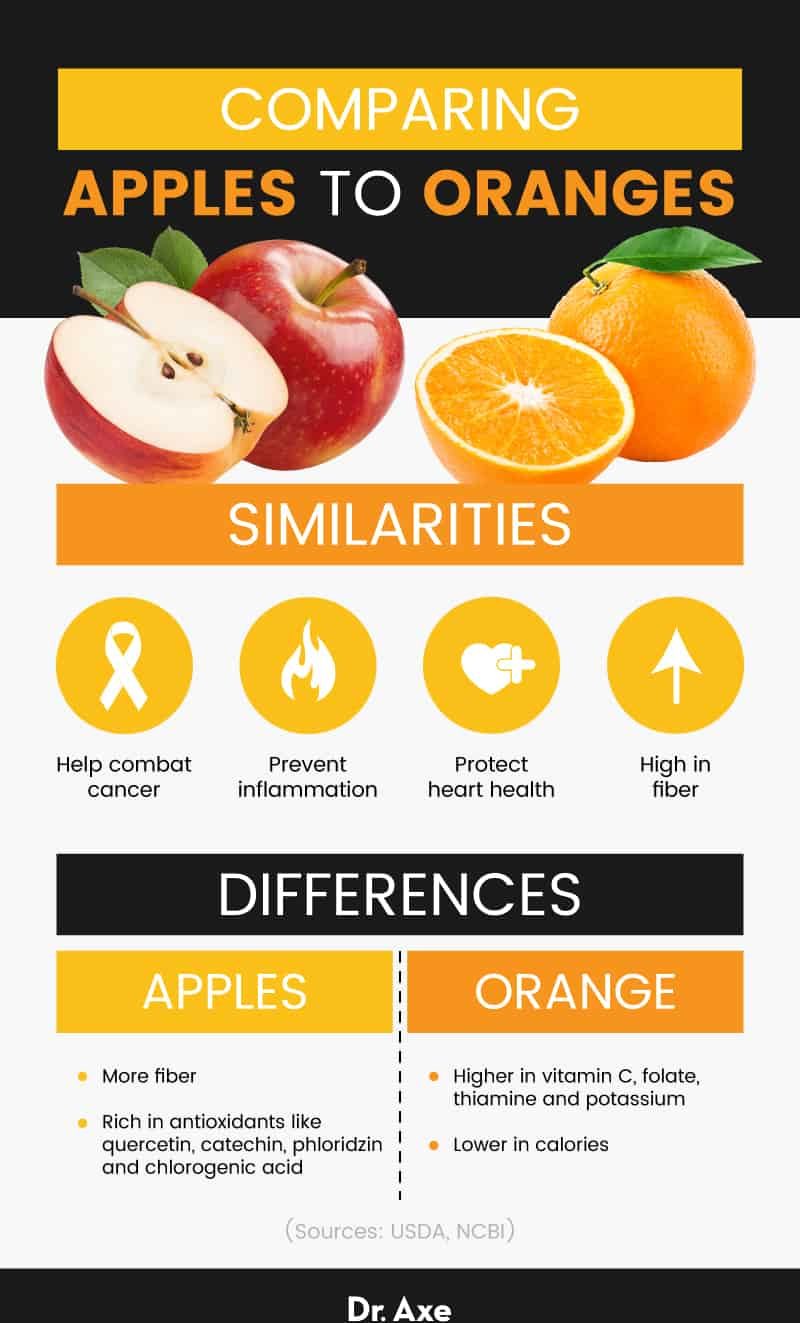This Dr. Axe content is medically reviewed or fact checked to ensure factually accurate information.
With strict editorial sourcing guidelines, we only link to academic research institutions, reputable media sites and, when research is available, medically peer-reviewed studies. Note that the numbers in parentheses (1, 2, etc.) are clickable links to these studies.
The information in our articles is NOT intended to replace a one-on-one relationship with a qualified health care professional and is not intended as medical advice.
This article is based on scientific evidence, written by experts and fact checked by our trained editorial staff. Note that the numbers in parentheses (1, 2, etc.) are clickable links to medically peer-reviewed studies.
Our team includes licensed nutritionists and dietitians, certified health education specialists, as well as certified strength and conditioning specialists, personal trainers and corrective exercise specialists. Our team aims to be not only thorough with its research, but also objective and unbiased.
The information in our articles is NOT intended to replace a one-on-one relationship with a qualified health care professional and is not intended as medical advice.
Orange Nutrition Benefits Skin, Gut Health & Immunity
January 10, 2024

We’ve all heard the saying “an apple a day keeps the doctor away,” but with all of the antioxidants, micronutrients and health-promoting properties crammed inside the orange, it’s safe to say that oranges may be just as effective in keeping you healthy. In fact, the orange nutrition profile contains a good chunk of the fiber, vitamin C, folate, thiamine and potassium that you need in the entire day.
Eating oranges — along with using orange oil — has been associated with numerous health benefits, from reducing the risk of heart disease to fighting cancer. With the many varieties of oranges available from kumquats to clementines, cara caras and beyond, there are plenty of ways to enjoy this delicious citrus fruit and get the benefits of orange nutrition.
Nutrition Facts
Oranges are low in calories but contain a good amount of fiber, vitamin C and riboflavin, as well as a range of other important vitamins, minerals and antioxidants.
One raw, navel orange (about 140 grams) contains approximately:
- Calories: 73
- Total Carbohydrates: 16.5 g
- Fiber: 2.8 g
- Sugar: 12 g
- Total Fat: 0.2 g
- Protein: 1.3 g
- Cholesterol: 0 mg
- Sodium: 12.6 mg (1% DV*)
- Vitamin C: 82.7 mg (92% DV)
- Riboflavin: 0.971 mg (75% DV)
- Folate: 35 mcg (9% DV)
- Thiamin: 0.095 mg (8% DV)
- Pantothenic acid: 0.365 mg (7% DV)
- Vitamin B6: 0.111 mg (6% DV)
- Calcium: 60.2 mg (5% DV)
- Potassium: 232 mg (5% DV)
- Magnesium: 15 mg (4% DV)
- Niacin: 0.595 mg (4% DV)
- Iron: 0.462 mg (3% DV)
- Phosphorus: 32.2 mg (2% DV)
*Daily Value: Percentages are based on a diet of 2,000 calories a day.
Keep in mind that these orange nutrition facts are for raw oranges. Orange juice nutrition, on the other hand, is higher in calories and sugar, plus lower in fiber and multiple nutrients.
Types
Oranges have an extensive history and have been enjoyed for their sweet flavor and impressive nutrient profile for centuries. It’s believed that orange trees are native to the tropical regions in Asia and later spread to India, Africa and the Mediterranean.
Oranges generally fall into one of three categories: sweet, bitter or mandarins. Sweet oranges are usually eaten or used to make juice while bitter oranges are used for making marmalades and orange-flavored liqueurs. The navel orange is one of the most common types of oranges. This type is seedless with a thick skin and characteristic navel-like dimple on one end.
Mandarins are closely related to oranges but are actually a different variety of the same species. They tend to be smaller and sweeter than oranges and are easier to peel. The tangerine fruit nutrition profile is also pretty similar with minute differences in the amounts of certain micronutrients.
Clementines, also sometimes called cuties, are another popular choice because of their small size and easy peel. The blood orange, on the other hand, stands out because of its distinct dark red flesh, which is thanks to the presence of anthocyanins, a type of antioxidant pigment.
Here are a few other types of oranges that are available:
- Seville oranges
- Kumquats
- Citrus bergamot oranges
- Kishus
- Cara cara oranges
- Satsumas
- Valencia oranges
Benefits of Oranges
1. High in Antioxidants
Citrus fruits like oranges are packed with health-promoting antioxidants. Antioxidants are compounds that fight free radicals to prevent oxidative stress and protect against chronic disease, and they are believed to play a role in the development and prevention of conditions like heart disease, cancer and diabetes.
In particular, oranges are high in bioflavonoids, like hesperidin and hesperetin, which have been shown in test-tube studies to help neutralize free radicals, reduce inflammation and decrease oxidative damage to cells.
2. Enhance Immunity
Oranges are one of the top vitamin C foods, packing in nearly 100 percent of what you need for the whole day in just one average orange. In addition to its powerful antioxidant properties, vitamin C is also revered for its ability to improve immune function.
One review published in the Annals of Nutrition & Metabolism showed that getting enough vitamin C could help reduce symptoms and shorten the duration of respiratory tract infections like the common cold. Additionally, it could also decrease the incidence and improve the outcome for conditions like pneumonia, malaria and diarrhea.
3. Help Fight Cancer
Thanks to their high antioxidant content, some research indicates that getting your daily dose of oranges could help protect against and prevent the development of cancer. That’s why citrus fruits are often among the top cancer-fighting foods.
Oranges are very high in vitamin B2 (riboflavin), with one orange providing about 75 percent of the daily value. Studies have found that vitamin B2 intake is inversely associated with with some of the most common types of cancer, including colon cancer and breast cancer. Vitamin B2 benefits the immune system because it acts as an antioxidant that controls the presence of damaging free radicals within the body.
In fact, eating more citrus fruit has been associated with a lower risk of several types of cancer. One study in Korea, for example, found that having a high intake of citrus fruits was associated with a 10 percent reduction in the risk of developing breast cancer.
Other research has found similar inverse associations between citrus fruit intake and the risk of other types of cancer, including esophageal, pancreatic, stomach and prostate cancer.
4. Rich in Fiber
Oranges are an excellent high-fiber food. When you eat fiber, it moves through your gastrointestinal tract slowly, promoting satiety, adding bulk to the stool and getting things moving.
One large analysis out of China compiled the results of five studies and showed that fiber can increase stool frequency in people with constipation.
Fiber also acts as a prebiotic to provide fuel for the beneficial bacteria in your gut. Your gut microbiome is crucial to many aspects of health and is believed to influence the development of many different types of disease.
Fiber can also help ward off cravings and hunger. Its ability to keep you feeling full is also one of the main benefits of oranges for weight loss. With only 87 calories in an orange, it makes a filling and nutritious snack if you’re looking to lose weight fast.
5. Improve Heart Health
Adding oranges to your daily diet can have a profound effect on the health of your heart. Multiple studies have found that upping your intake of citrus fruits like oranges could do everything from improve your cholesterol levels to protect against coronary heart disease.
In one study, people with high cholesterol were supplemented with citrus flavonoids for a period of four to 12 weeks. Daily treatment reduced total cholesterol by up to 30 percent, slashed bad LDL cholesterol by up 27 percent and cut triglyceride levels by up to 34 percent.
Similarly, another study published in the Journal of Epidemiology showed that frequent consumption of citrus fruits was associated with a significant reduction in the risk of heart disease and stroke.
6. Boost Brain Function
The flavonoids found in oranges could help preserve cognitive function and prevent neurodegenerative disorders like dementia or Alzheimer’s. A study in the British Journal of Nutrition even found that a higher intake of citrus fruits was linked to improvements in cognitive function among older adults.
According to a recent 2017 study, the neuroprotective effects of citrus fruits may stem from the presence of two important flavonoids, nobiletin and tangeretin. Although more research is needed, preliminary findings from animal studies suggest that these flavonoids could be useful in the treatment and prevention of dementia.
7. Keep Skin Healthy
As a common ingredient in many skin care products, it’s no secret that the orange fruit benefits for skin are pretty impressive. In fact, some research shows that certain types of oranges may even been be able to help fight and reverse skin aging.
In one test-tube study, tangerine peels were shown to have anti-aging, anti-wrinkle properties thanks to their antioxidant content. Another study published in the Journal of Cosmetic Dermatology showed that supplementation with an extract from blood oranges helped protect against UV-induced skin damage and decreased age spot pigmentation by 20 percent.

How to Use
Oranges are widely available at most major grocery stores and supermarkets in the produce section. Getting your hands on some of the less common varieties can be a bit more challenging, but they can often be found at specialty stores and farmers markets.
Most commonly, oranges are peeled and eaten raw, juiced, or even added to your favorite dishes and desserts for a burst of flavor and nutrients. You can also grate the outer peel and add orange zest to baked goods, pasta dishes and sauces. Be sure to wash the orange thoroughly beforehand, however.
Orange oil, which is extracted from the outer peel of the orange, can also be added to beauty products and cleaning supplies to boost the antibacterial properties and deliver a concentrated dose of antioxidants.
While peeling a fresh orange and chowing down can be a satisfying snack all on its own, sometimes it’s also good to mix things up a bit.
Apples vs. Oranges
Apples and oranges are probably among the most popular fruits, but there are plenty of nutritional differences that set them apart, hence the expression: “Don’t compare apples to oranges.” However, we’re going to compare orange nutrition and apple nutrition anyway!
If you look at the nutritional content of one medium apple vs. one medium orange, for example, oranges contain less calories and fiber but are higher in vitamin C, folate, thiamine and potassium.
Putting the numbers aside, apples are also rich in antioxidants like quercetin, catechin, phloridzin and chlorogenic acid. Apple consumption has been associated with numerous health benefits, and studies show that apples may protect against conditions like cancer, heart disease, diabetes and even asthma.
While there may be some distinct differences between apples and oranges, each brings a unique set of nutrients and health benefits to the table and can make a positive addition to your diet. Include a few servings of both to take advantage of what each has to offer.
Risks and Side Effects
While orange nutrition benefits are pretty impressive, it’s important to remember that the same benefits may not extend to orange juice. This is because oranges contain a good amount of fiber, which helps slow the absorption of sugar in the bloodstream. Orange juice, on the other hand, provides a concentrated amount of the sugar found in oranges, without any of the beneficial fiber.
Commercial varieties, in particular, are pumped full of sugar and additives, minimizing the nutritional value of orange juice.
Some people may also need to keep their intake of oranges in moderation or eliminate them from the diet altogether.
Although rare, some people may be allergic to citrus fruits like oranges. Food allergy symptoms can include itching, swelling and even anaphylaxis, which can be life-threatening. If you experience these or any other adverse symptoms after eating oranges, discontinue use immediately, and speak with your doctor.
Oranges are also very acidic, which may aggravate heartburn and acid reflux symptoms in those who suffer from gastroesophageal reflux disease, or GERD. If you notice that oranges cause negative side effects like a burning feeling in the chest, nausea or belching, consider reducing your intake.
History
Although the bitter orange was brought to Sicily in the 9th century, the sweet orange wasn’t introduced until the end of the 15th century. In Spain, meanwhile, it’s believed that large-scale orange cultivation dates back to the 10th century as complex irrigation systems were developed specifically for orange orchards.
Scurvy, a condition caused by a deficiency in vitamin C, was especially prevalent among sailors during the Age of Exploration. Sailors were often encouraged to drink orange and lemon juice to help prevent scurvy, and citrus trees were even planted along trade routes.
Oranges were first brought to the American continent by Spanish explorers. Some say that Christopher Columbus may have even planted an orange tree on the island of Hispaniola during his second voyage in 1493.
Today, Brazil tops the chart as the biggest producer of oranges around the globe. Other top producers include the United States, China and India.
Conclusion
- There are very few calories in a large orange, but orange nutrition is high in fiber, vitamin C and a host of other micronutrients.
- Compared to apple nutrition, oranges are lower in calories and fiber but higher in vitamin C, folate, thiamine and potassium. Include both in your diet to enjoy all of the health-promoting properties.
- Orange benefits include enhanced immunity, improved digestive and heart health, better brain function, and improved skin. Oranges are also high in antioxidants and have been associated with a reduced risk of cancer.
- There are many varieties of oranges available and plenty of ways to incorporate them into your diet to help you take advantage of the orange nutrition benefits.



